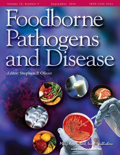
Foodborne Pathogens and Disease
Scope & Guideline
Uncovering the hidden threats in our food systems.
Introduction
Aims and Scopes
- Food Safety and Microbial Pathogens:
The journal emphasizes research on foodborne pathogens such as Salmonella, E. coli, and Listeria, exploring their prevalence, virulence, and resistance patterns in various food matrices. - Antimicrobial Resistance:
A significant focus is placed on studying antimicrobial resistance profiles among foodborne pathogens, including the mechanisms of resistance and implications for public health. - Epidemiological Studies:
The journal publishes epidemiological research that tracks outbreaks and assesses risk factors associated with foodborne illnesses, contributing to the understanding of transmission dynamics. - Innovative Detection Methods:
Research on novel detection methods, including molecular techniques, is highlighted, aiming to enhance the rapid identification of pathogens in food products. - Food Safety Interventions:
The journal includes studies on interventions and control measures to mitigate foodborne illnesses, focusing on practical applications in food industry settings. - Public Health Implications:
Articles also explore the broader public health implications of foodborne diseases, including economic burdens and healthcare impacts.
Trending and Emerging
- Whole Genome Sequencing (WGS) Applications:
There is a growing trend in utilizing whole genome sequencing for outbreak investigation and pathogen characterization, enhancing the ability to trace and control foodborne pathogens. - Antimicrobial Resistance Genes and Plasmids:
Research focusing on the identification and characterization of antimicrobial resistance genes, particularly those associated with plasmid transmission, is increasingly prominent. - Impact of Climate Change on Food Safety:
Emerging studies are beginning to explore how climate change affects foodborne pathogens, including changes in pathogen virulence and distribution. - Microbiome Studies in Food Safety:
There is a rising interest in studying the microbiome of food products and its effect on food safety, highlighting the complex interactions between foodborne pathogens and beneficial microorganisms. - Innovative Food Preservation Techniques:
Research on novel preservation methods, such as the use of natural antimicrobials and biopreservation strategies, is gaining traction as alternatives to traditional chemical preservatives. - Consumer Behavior and Food Safety:
An increasing number of studies are examining consumer behaviors and perceptions regarding food safety, particularly in the context of emerging pathogens and foodborne outbreaks.
Declining or Waning
- Traditional Culture-Based Methods:
There is a noticeable decline in studies utilizing traditional culture-based methods for pathogen detection, as the field shifts towards more rapid molecular and genomic approaches. - Single Pathogen Studies:
Research focusing on single pathogens has become less common, with a trend towards multi-pathogen studies that assess broader microbial communities in food safety contexts. - Historical Epidemiological Studies:
Research that solely investigates historical outbreaks without integrating modern genomic techniques or contemporary data analytics is becoming less frequent. - Foodborne Illness Surveillance Reports:
The publication of general surveillance reports on foodborne illnesses is waning as the journal increasingly prioritizes specific, actionable research findings.
Similar Journals

INDIAN JOURNAL OF MICROBIOLOGY
Pioneering Research at the Microbial FrontierINDIAN JOURNAL OF MICROBIOLOGY, published by Springer, serves as a vital platform for the dissemination of cutting-edge research in the field of microbiology. With an ISSN of 0046-8991 and an E-ISSN of 0973-7715, this esteemed journal invites contributions that span various disciplines within microbiology, encompassing both fundamental studies and applied research that can impact health, environment, and industry. Recognized in the Q3 category in Microbiology for 2023, and ranking #80 out of 182 in Scopus’ Microbiology category, it reflects its commitment to quality and significance in the academic community. Authors and researchers benefit from the journal's comprehensive review process, which enhances the visibility and reach of their work. While no open access options are currently offered, the INDIAN JOURNAL OF MICROBIOLOGY remains a premier choice for those aiming to contribute to the ongoing dialogue in microbiological studies, ensuring that knowledge continues to evolve and thrive.
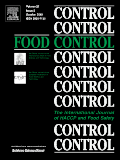
FOOD CONTROL
Elevating standards in food science and biotechnology.FOOD CONTROL, published by Elsevier Science Ltd, stands at the forefront of research in the fields of Food Science and Biotechnology, holding a prestigious Q1 ranking in both categories as of 2023. With an impact factor reflecting its influential role in the scientific community, this journal is dedicated to advancing the understanding and control of food safety, quality, and regulations from 1990 to its projected convergence in 2025. Food Control provides a platform for innovative research and critical reviews that address the pressing global challenges in food safety, sustainability, and technological advancements in the industry. Researchers, professionals, and students are encouraged to engage with its content, fostering a deeper understanding of the intersection between food science and biotechnological advancements, all while benefiting from the extensive reach of its Scopus rankings, which place it in the top 5th percentile of its respective fields.
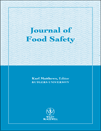
JOURNAL OF FOOD SAFETY
Transforming insights into action for food safety.Journal of Food Safety is a premier resource in the field of food science, offering invaluable insights into food safety practices, microbiology, and parasitology. Published by WILEY, this journal has been a pivotal platform for the dissemination of research since its inception. With an impressive impact factor reflecting its esteemed reputation, the journal caters to a diverse audience of researchers, professionals, and students committed to advancing knowledge in food safety. While currently not an open access journal, it still provides essential findings that contribute significantly to the understanding of foodborne pathogens and preventive measures. Recognized in the Q2 and Q3 quartiles across various relevant disciplines, including Food Science, Microbiology, and Parasitology, the Journal of Food Safety continues to uphold high standards in scientific research and education. Researchers are encouraged to submit their manuscripts and engage with groundbreaking studies that are shaping the future of food safety.
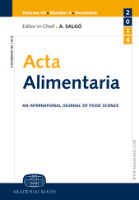
ACTA ALIMENTARIA
Innovating food chemistry and nutrition for a sustainable world.ACTA ALIMENTARIA is a renowned journal in the field of food science, published by AKADEMIAI KIADO ZRT, based in Hungary. Since its inception in 1973, it has served as a vital platform for disseminating high-quality research on food chemistry, microbiology, nutrition, and technology, contributing significantly to the advancement of knowledge in the agricultural and biological sciences. Currently classified in the Q3 quartile of the 2023 Food Science category, the journal is positioned to address pressing issues pertaining to food safety, quality, and sustainability, making it an invaluable resource for researchers, professionals, and students alike. Although it does not currently offer open access, the journal maintains a strong reputation with a readership keenly interested in the latest developments in food science. With a Scopus rank placing it in the 38th percentile of its category, ACTA ALIMENTARIA continues to be a pivotal reference for those engaged in food research and innovation.

ITALIAN JOURNAL OF FOOD SCIENCE
Cultivating a Global Dialogue on Food ScienceITALIAN JOURNAL OF FOOD SCIENCE is a distinguished open-access publication dedicated to advancing knowledge in the field of food science, catering to a global audience of researchers, professionals, and students. Published by Codon Publications in Singapore, this journal, operating under the ISSN 1120-1770 and E-ISSN 2239-5687, has been a vital platform for scholarly discourse since its inception in 1996, converging towards a comprehensive view of food science trends through 2024. With an impressive ranking in the third quartile (Q3) of the Food Science category and a Scopus rank of #151 out of 389, the journal plays a significant role in disseminating high-quality research, contributing to a richer understanding of food science within the agricultural and biological sciences. Since transitioning to open access in 2008, it has further expanded its reach, ensuring that innovative research is accessible to all, thereby fostering collaboration and knowledge exchange in this vital industry.

Reviews and Research in Medical Microbiology
Delivering High-Impact Research for Healthcare ProfessionalsReviews and Research in Medical Microbiology is a premier academic journal published by LIPPINCOTT WILLIAMS & WILKINS, focusing on groundbreaking research and comprehensive reviews that advance the understanding of medical microbiology. With an ISSN of 2770-3150 and an E-ISSN of 2770-3169, this journal serves as an essential resource for researchers, healthcare professionals, and students dedicated to the study of pathogens, infectious diseases, and microbial mechanisms affecting health. While the journal currently does not offer open access, its rigorous peer-review process ensures that only high-quality, impactful research is disseminated to the scientific community. The journal aims to bridge gaps in knowledge by presenting cutting-edge studies that explore novel therapeutic strategies, diagnostic methods, and the evolving landscape of microbial resistance. Nestled in the heart of Philadelphia, this journal proudly contributes to the advancement of medical microbiology and is an indispensable platform for the publication of critical findings that shape clinical practices and research trajectories in the field.

Acta Scientiae Veterinariae
Elevating the standards of veterinary sciences worldwide.Acta Scientiae Veterinariae is an esteemed academic journal dedicated to advancing knowledge in the field of veterinary sciences. Published by the Universidade Federal do Rio Grande do Sul, this journal serves as a vital platform for researchers, professionals, and students interested in the latest findings and developments in veterinary medicine and related disciplines. Operating under an open access model, Acta Scientiae Veterinariae ensures that its content is freely accessible, promoting widespread dissemination of research that contributes to the understanding and welfare of animal health. With an ISSN of 1678-0345 and an E-ISSN of 1679-9216, the journal has made a significant impact in its category, holding a Q4 ranking in the Veterinary (miscellaneous) category as per the latest 2023 categorizations and ranking in the 11th percentile, reflecting its continued relevance within the academic community. As it converges years from 2010 to 2024, Acta Scientiae Veterinariae continues to foster innovation and collaboration in veterinary research, making it an invaluable resource for those committed to enhancing animal health and veterinary practices.

Food Science and Human Wellness
Connecting Food Science with Human HealthFood Science and Human Wellness, published by TSINGHUA UNIVERSITY PRESS, is an esteemed open-access journal that has been at the forefront of advancing research in the interdisciplinary fields of food science and human health since its inception in 2012. With an impressive impact factor indicative of its quality and relevance, this journal holds a prestigious Q1 ranking in Food Science according to 2023 metrics, reflecting its commitment to high-caliber research and innovation. The journal is positioned within the top 12% of its category, ranked 46th out of 389 in Agricultural and Biological Sciences. The journal not only publishes original research articles but also critical reviews, perspectives, and innovations that contribute significantly to our understanding of the relationship between nutrition, wellness, and food science. With its Open Access model, Food Science and Human Wellness ensures that its valuable content is available to a global audience, fostering collaborative advancements in this vital field. Researchers, professionals, and students are invited to explore insightful discussions and impactful studies that aim to enhance public health and food safety.

Microbiology Research
Fostering Collaboration in Microbial InnovationMicrobiology Research, published by MDPI, stands as a pivotal open-access journal in the field of microbiology, having established its presence since 2010. Based in Switzerland, this journal strives to provide a platform for innovative research and cutting-edge findings in various branches of microbiology, including medical microbiology and molecular biology. With an impact factor that reflects its dedication to scholarly excellence, Microbiology Research is classified in the Q3 category for both microbiology and medical microbiology, and Q4 for molecular biology as of 2023, indicating its growing importance and outreach within these domains. The journal aims to foster discussion and collaboration among researchers, professionals, and students by presenting articles that cover a wide array of topics and methodologies in microbiological research. Leveraging its open-access model, Microbiology Research ensures that high-quality research is accessible to a global audience, thus facilitating the advancement of knowledge and innovation in the microbial sciences.
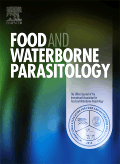
Food and Waterborne Parasitology
Unveiling the Impact of Parasites on Public HealthFood and Waterborne Parasitology is a premier open-access journal published by ELSEVIER, dedicated to the critical study of parasites affecting food and water safety. Since its inception in 2015, the journal has significantly contributed to research in the fields of epidemiology, food science, and parasitology, achieving impressive rankings in its categories with a Q1 status in Food Science and a Q2 in both Epidemiology and Parasitology as of 2023. Addressed from RADARWEG 29, 1043 NX Amsterdam, Netherlands, it garners attention for its accessible content, aiming to elevate the understanding of the impact of parasitic organisms on public health and food security. With its open-access model, the journal enhances visibility and dissemination of research findings, fostering collaboration and innovation among researchers, professionals, and students alike. By bridging scientific inquiry with practical applications, Food and Waterborne Parasitology plays a pivotal role in addressing global health challenges and advancing knowledge in this vital area of study.